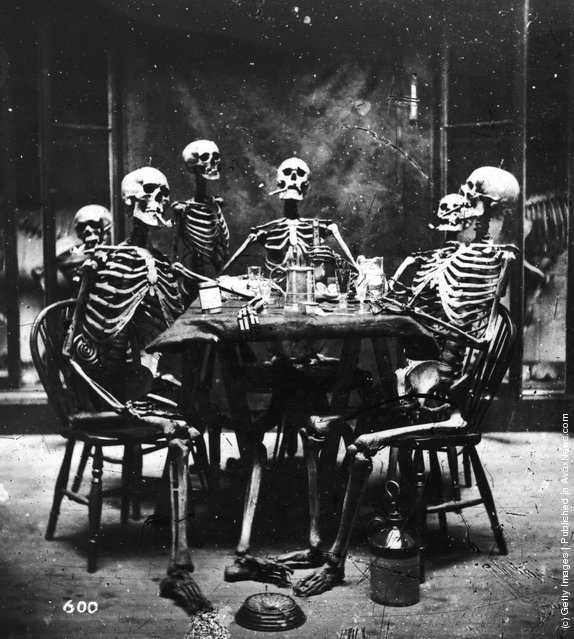
Six skeletons smoking around the dinner table, circa 1865. (Photo by London Stereoscopic Company/Hulton Archive/Getty Images)
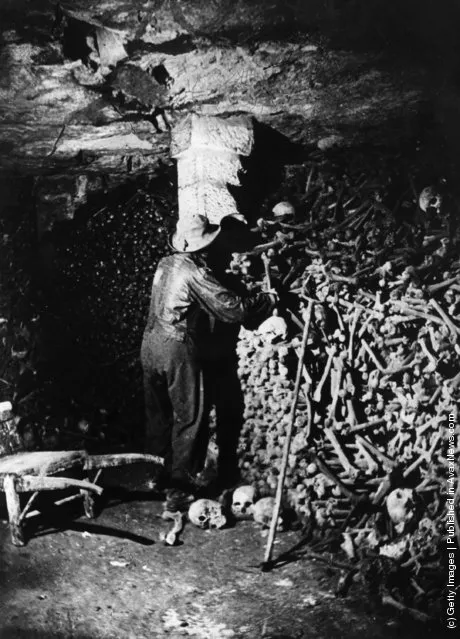
A man working in the catacombs of Paris in one of the first pictures taken by artificial lights by Nadar. A large pile of human bones and skulls fill the tomb. (Photo by Nadar/Henry Guttmann/Getty Images). Circa 1870
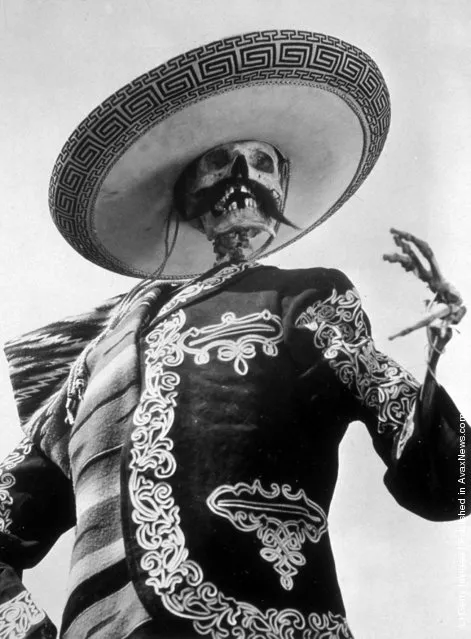
A skeleton dressed as Hacendado, as a symbol of the effective authority of the Mexican dictatorship. (Photo by Henry Guttmann/Getty Images). Circa 1935
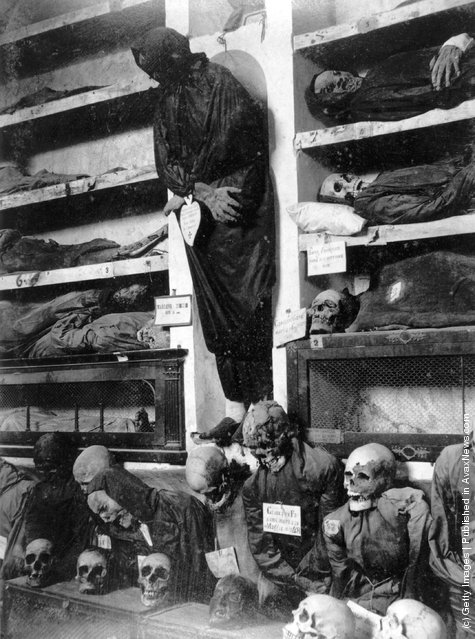
Skeletal remains in the Capuchine Catacombs in Palermo. (Photo by Hulton Archive/Getty Images). Circa 1940
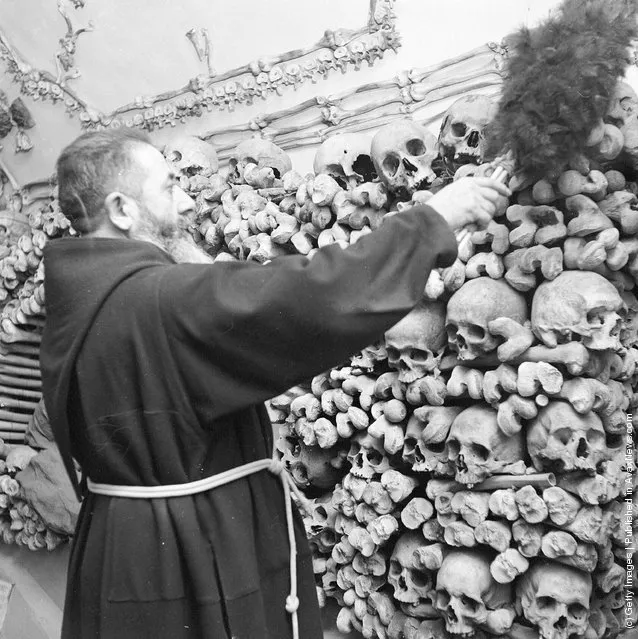
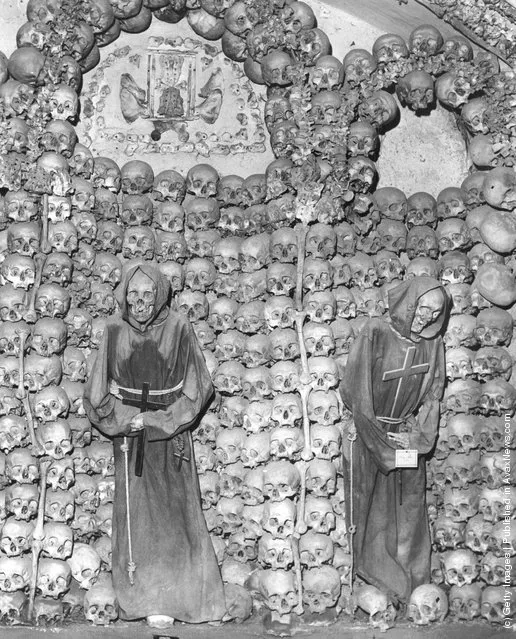

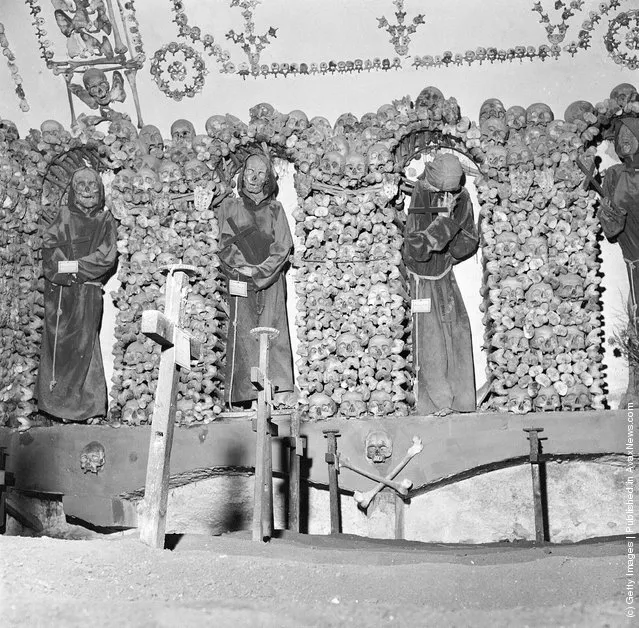
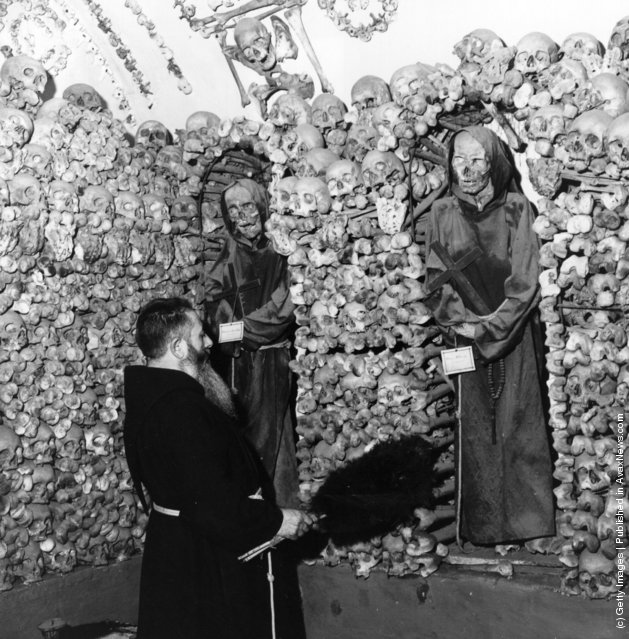
A monk dusts down the remains of his dead comrades in the tombs and the catacombs of a Rome monastery. (Photo by Vecchio/Three Lions/Getty Images). Circa 1950
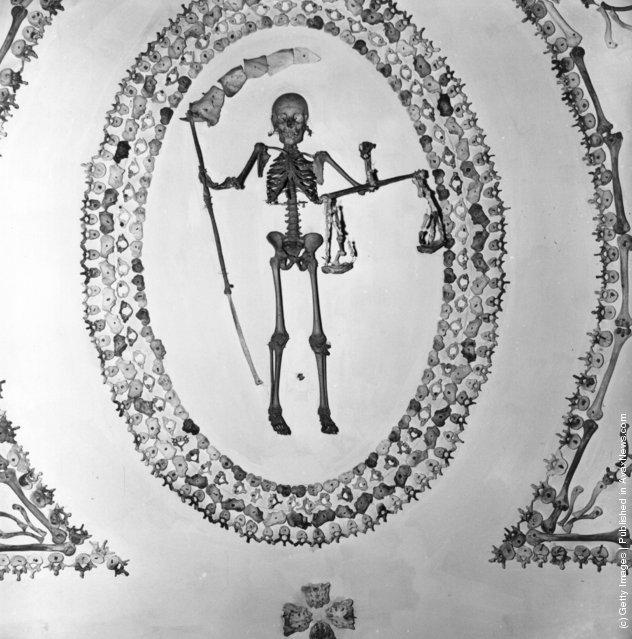
The ceiling design in the Capuchin monastery. Father Time is depicted as a skeleton ringed in vertebrae bones. (Photo by Vecchio/Three Lions/Getty Images). Circa 1950
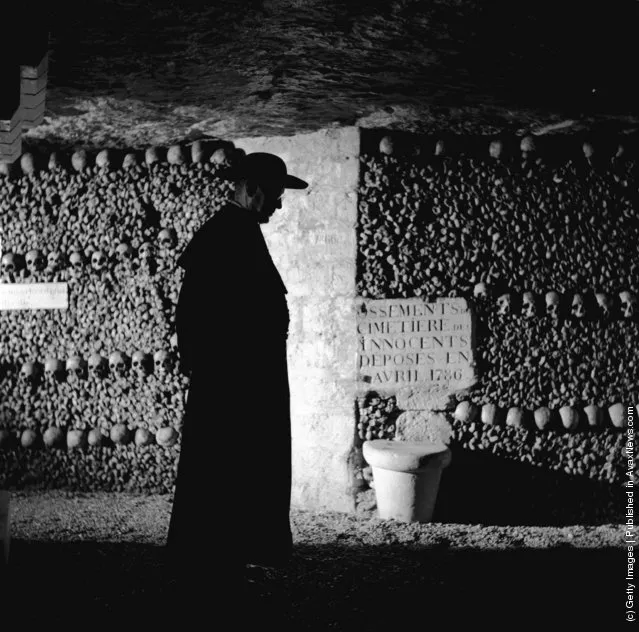
British actor Alec Guinness (1914–2000) on location in the catacombs of Paris during filming of “Father Brown”, in which he plays G. K. Chesterton's famous priest detective. Titled “The Detective” in the US, the film was directed by Robert Hamer for Columbia. (Photo by Vagn Hansen/BIPs/Getty Images). 1955
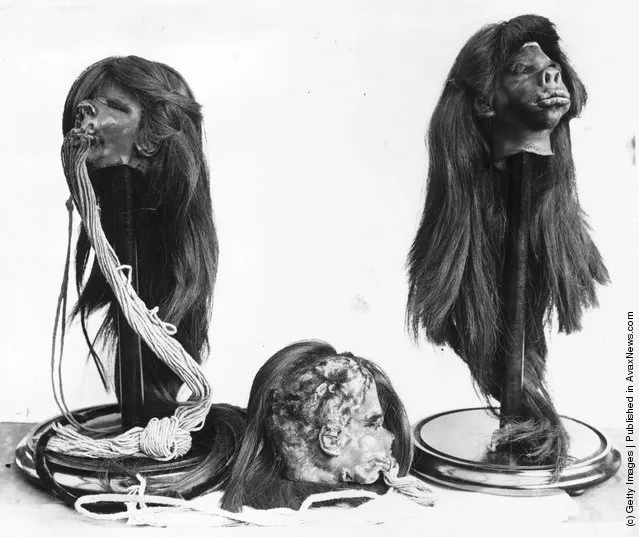
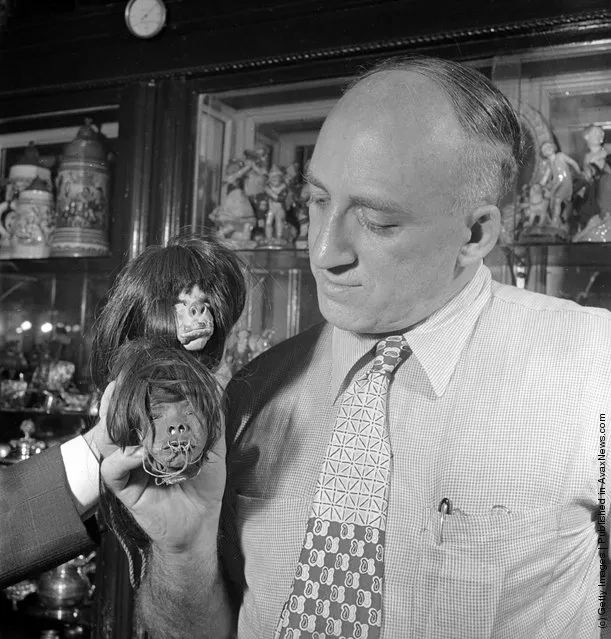
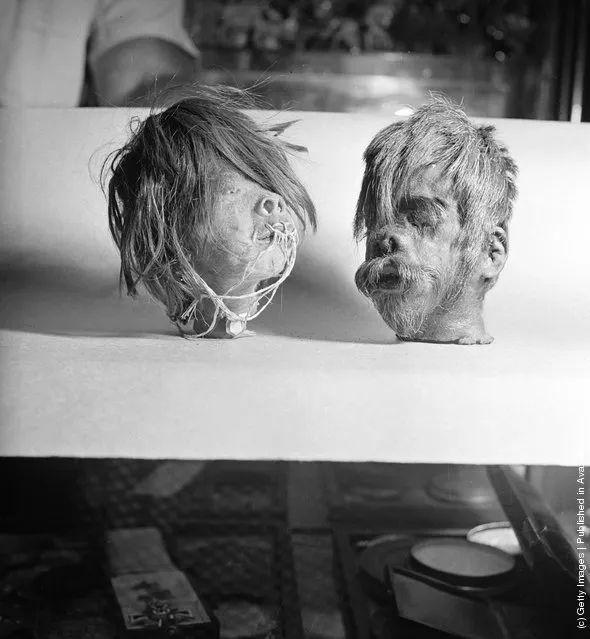
Shrunken heads from the South American Jivaros tribe. The heads go through a tanning process and are baked to preserve them. (Photo by Doreen Spooner/Keystone Features/Getty Images). August 1950
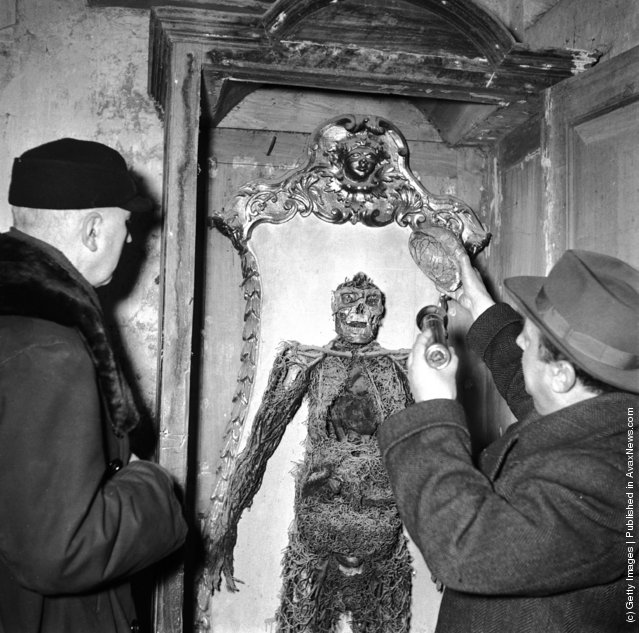

A skeleton in the Capella Sansevero, an ancient Italian church which has been turned into a private museum of anatomical petrification. The skeleton was given an injection before death which somehow preserved all veins, arteries and capillaries. (Photo by Evans/Three Lions/Getty Images). Circa 1955
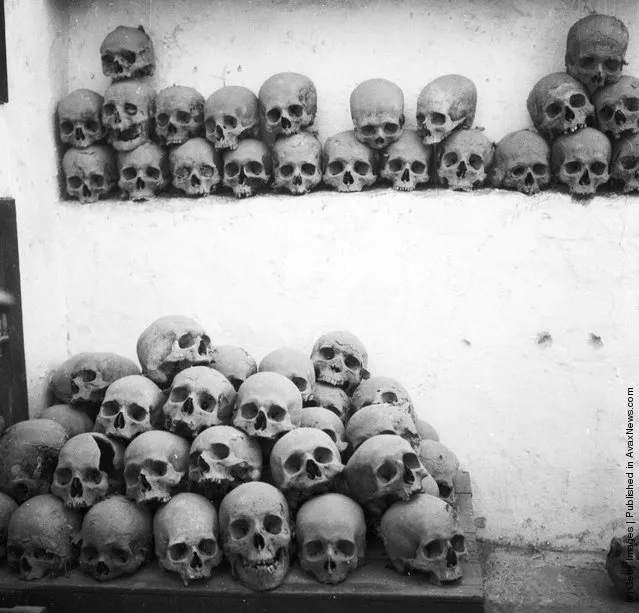
The skulls of hundreds of monks piled up in the Room of Bones at the Monastery of St Catherine in Sinai, Egypt. (Photo by Keystone Features/Getty Images). May 1965
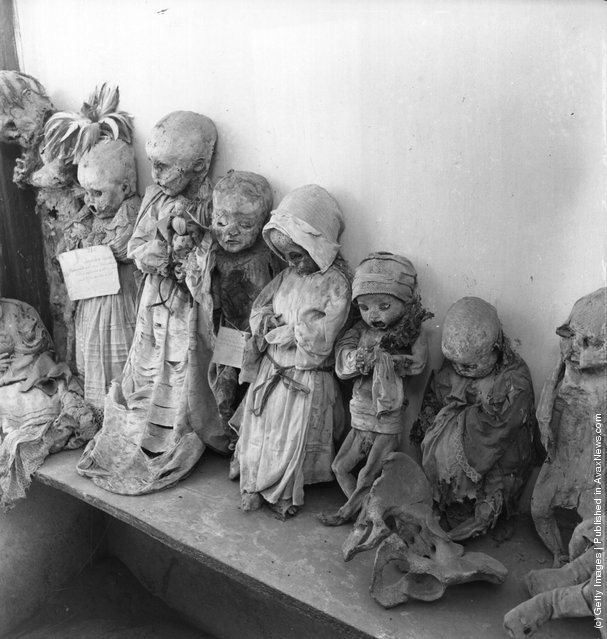
Mummified infants from the turn of the century in the vault of the Panteon Cemetery in Guanajuato on the summit of Cerro del Trozado, Mexico. (Photo by Three Lions/Getty Images). Circa 1955
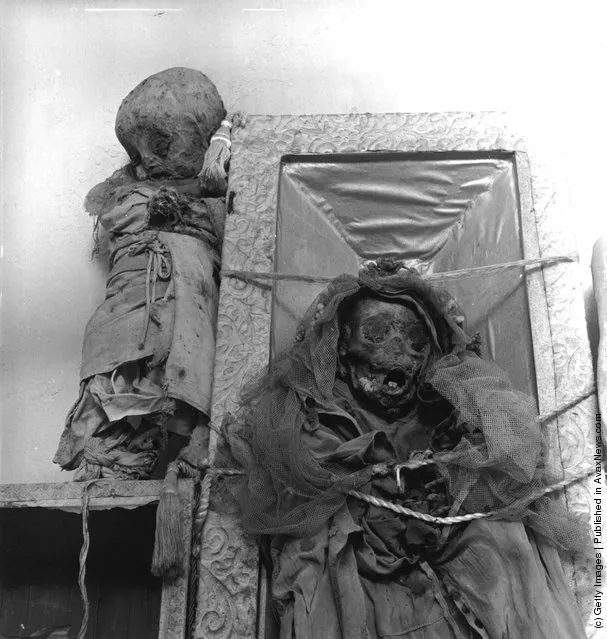
A young girl buried in her communion dress in the vault of the Panteon Cemetery in Guanajuato on the summit of Cerro del Trozado, Mexico. (Photo by Three Lions/Getty Images). Circa 1955
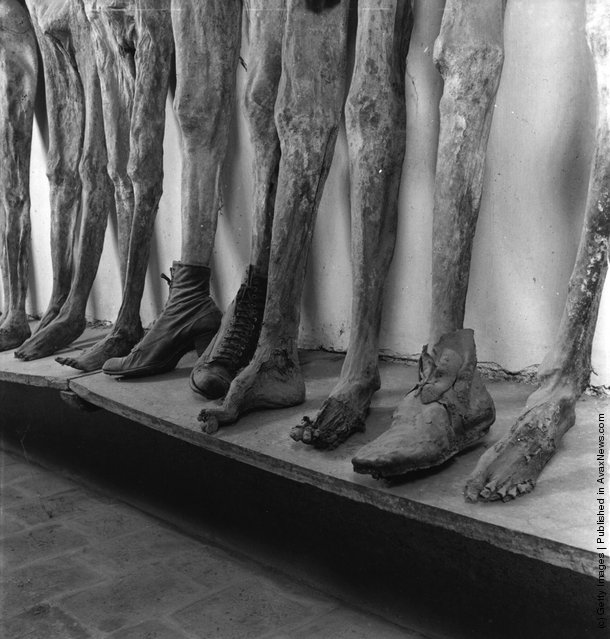
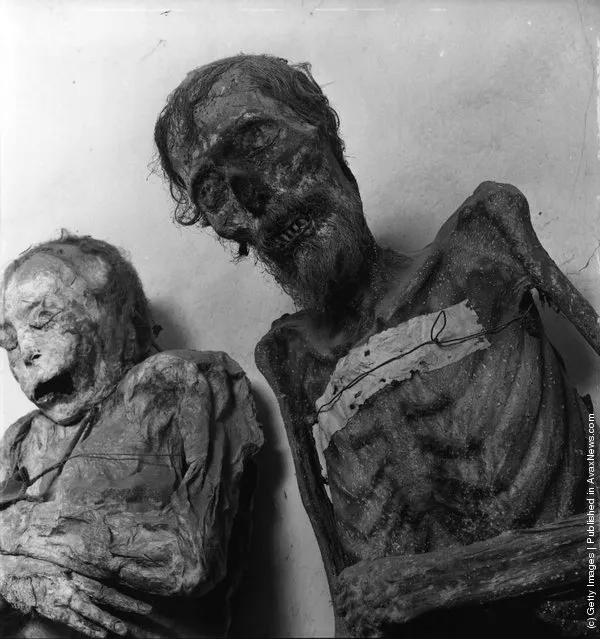
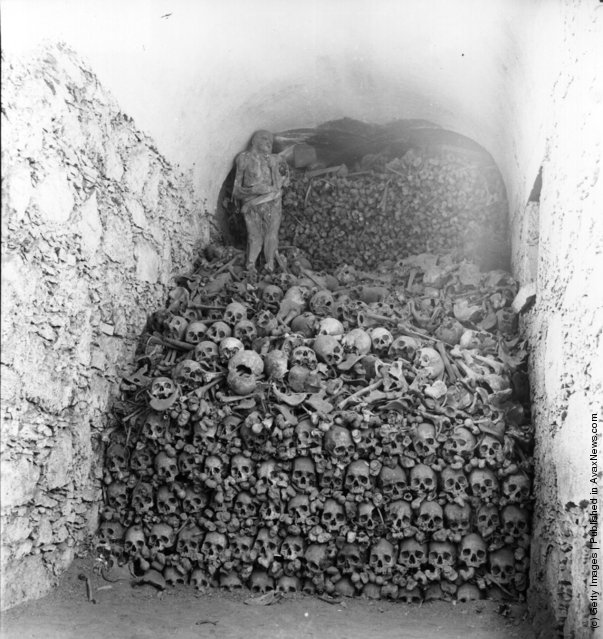

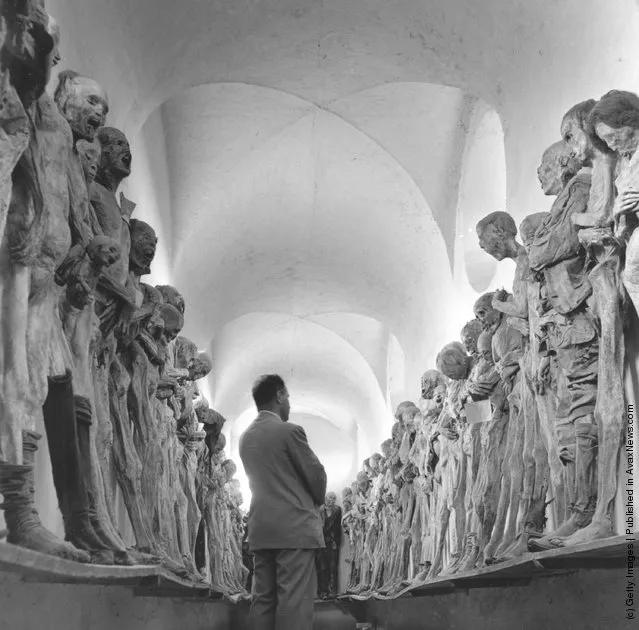
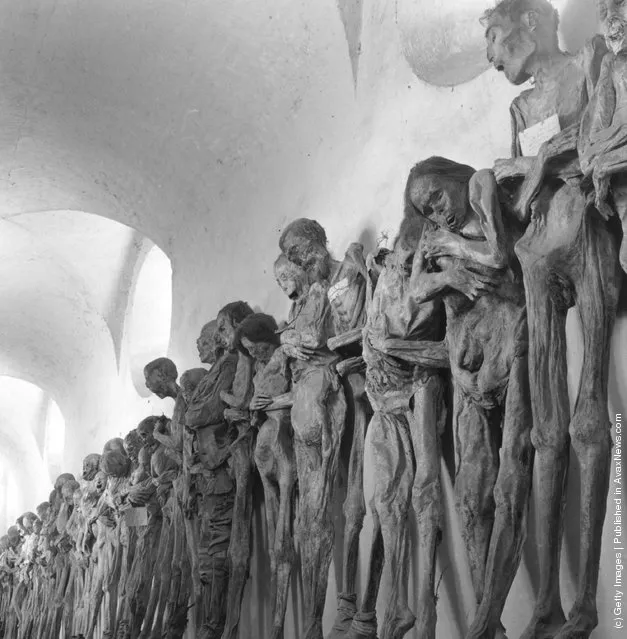
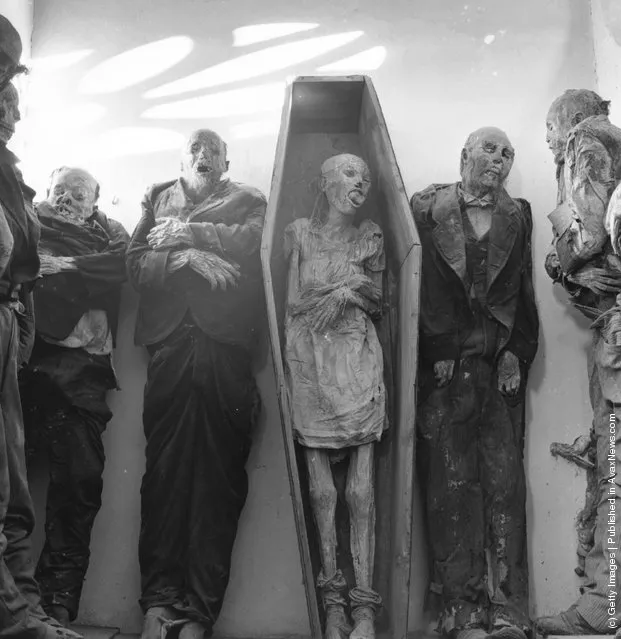
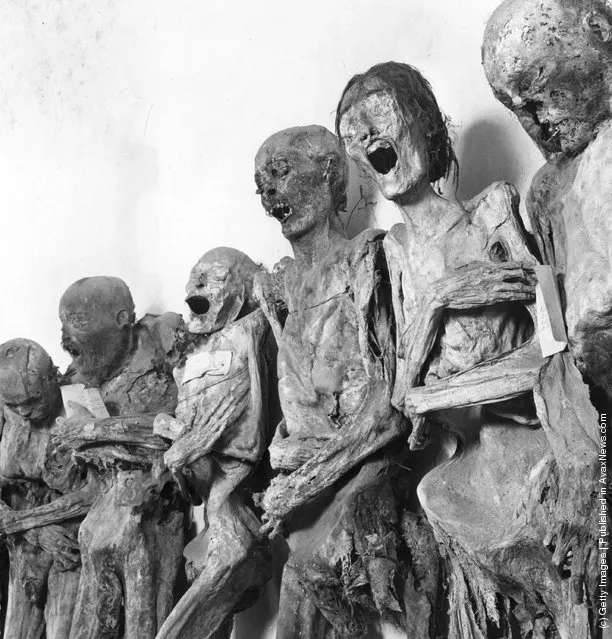
Dried and shrivelled corpses, some fully clothed and some in coffins, line the wall of a vault of the Pantheon Cemetery on the summit of Cerro del Trozado in Mexico. They were removed from the crypts because of non-payment of cemetery fees. The hot dry air stopped the bodies from rotting. Most of them were placed here between the turn of the century and WW I. (Photo by Three Lions/Getty Images). Circa 1955
29 Aug 2011 13:46:00,
post received
0 comments
